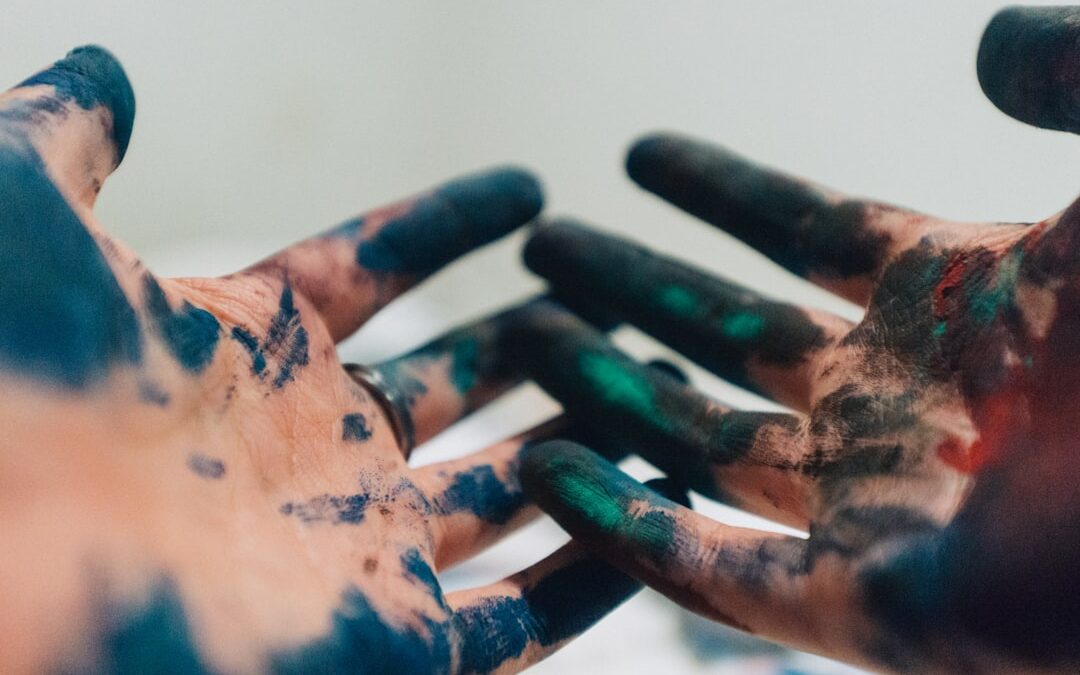When it comes to painting your home, following a proper painting order is essential to achieving a professional-looking paint job. Whether you’re looking to freshen up the interior or enhance the curb appeal of your home, a well-painted home can make a significant difference. Not only does it improve the overall aesthetics, but it can also increase the value of your home. Therefore, it’s crucial to understand the correct order in which to paint different surfaces and hire professional painters near you for the best results.
Key Takeaways
- Hiring professional home painters can save time and ensure a high-quality finish.
- The best order to paint a house is to start with the ceiling, then move to the walls, trim, and doors/windows.
- Proper surface preparation, including cleaning, sanding, and repairing, is crucial for a long-lasting paint job.
- Priming is essential for achieving a smooth and even finish and improving paint adhesion.
- Choosing the right paint and technique for the walls and trim can make a big difference in the final result.
Benefits of Hiring Professional Home Painters Near Me
Hiring professional painters near you comes with several advantages that can make a significant difference in the outcome of your paint job. Firstly, professional painters have the expertise and experience to handle any painting project efficiently and effectively. They are trained in various techniques and know how to achieve a smooth and flawless finish.
In addition to their expertise, professional painters also have access to high-quality equipment and tools that can make a significant difference in the outcome of your paint job. They have the right brushes, rollers, sprayers, and other tools necessary for different surfaces and techniques. This ensures that the paint is applied evenly and smoothly, resulting in a professional-looking finish.
Another benefit of hiring professional painters is that they can save you time and effort. Painting an entire house can be a time-consuming task, especially if you’re not experienced or don’t have the right tools. Professional painters have the skills and resources to complete the job efficiently, allowing you to focus on other important tasks or simply enjoy your free time.
Step-by-Step Guide to the Best Order to Paint a House
To achieve the best results when painting your house, it’s important to follow a specific order. This ensures that each surface is properly prepared and painted, avoiding any mistakes or inconsistencies. The recommended order to paint a house is as follows:
1. Ceiling: Start by painting the ceiling first. This allows you to work from top to bottom and avoid any drips or splatters on freshly painted walls or trim. Use a roller with an extension pole for easy reach and apply the paint in even strokes.
2. Walls: Once the ceiling is dry, move on to painting the walls. Start from one corner and work your way across the room in a systematic manner. Use a roller for large areas and a brush for corners and edges. Be sure to apply the paint evenly and avoid any visible brush or roller marks.
3. Trim: After the walls are dry, it’s time to paint the trim. This includes baseboards, crown molding, door frames, and window frames. Use a brush for precision and take your time to ensure clean lines and smooth coverage.
4. Doors and Windows: Finally, paint the doors and windows. Be sure to properly prepare the surface by cleaning, sanding, and priming if necessary. Use a brush or roller depending on the size of the surface and apply the paint evenly in smooth strokes.
By following this order, you can ensure that each surface is properly prepared and painted, resulting in a professional-looking finish.
Preparing the Surface: Cleaning, Sanding, and Repairing
Before painting any surface, it’s crucial to properly prepare it to ensure a long-lasting paint job. This includes cleaning, sanding, and repairing any damages.
Start by cleaning the surface using a mild detergent or TSP (trisodium phosphate) solution to remove any dirt, grease, or stains. This will ensure that the paint adheres properly and prevents any peeling or flaking in the future.
Next, sand the surface to create a smooth and even texture. This is especially important for surfaces with existing paint or varnish. Use sandpaper or a sanding block to remove any rough spots or imperfections. Be sure to wipe away any dust or debris before applying the paint.
If there are any damages or holes in the surface, it’s important to repair them before painting. Use a spackling compound or wood filler to fill in any cracks, dents, or nail holes. Once the compound is dry, sand it down to create a smooth surface.
Taking the time to properly prepare the surface will ensure that the paint adheres properly and results in a long-lasting finish.
Priming: The Key to a Long-Lasting Paint Job
Priming is an essential step in the painting process that should not be overlooked. It acts as a sealant, creating a smooth and even surface for the paint to adhere to. Priming also improves paint adhesion, ensuring that the paint lasts longer and doesn’t peel or flake.
Before priming, be sure to clean and prepare the surface as mentioned earlier. Once the surface is dry and free of any dust or debris, apply a coat of primer using a brush or roller. Be sure to choose a primer that is suitable for the surface you’re painting, such as a latex primer for walls or a wood primer for trim.
Apply the primer evenly and allow it to dry completely before applying the paint. This will ensure that the paint adheres properly and results in a long-lasting finish.
Painting the Ceiling: Tips and Tricks for a Smooth Finish

Painting the ceiling can be a challenging task, but with the right tools and techniques, you can achieve a smooth and professional-looking finish.
Start by using an extension pole on your roller to reach high ceilings without straining yourself. This will allow you to apply the paint evenly without any visible roller marks.
When painting, work in small sections at a time, overlapping each stroke slightly to ensure even coverage. Be sure to use enough paint on your roller to avoid dry spots but not too much that it drips or splatters.
If you’re painting over a dark or stained ceiling, it may require multiple coats to achieve the desired coverage. Allow each coat to dry completely before applying the next.
Lastly, be sure to protect your furniture and floors from any paint drips or splatters by using drop cloths or plastic sheets. This will make cleanup much easier and prevent any damage to your belongings.
Painting the Walls: Choosing the Right Paint and Technique
When it comes to painting the walls, choosing the right paint and technique is crucial to achieving a professional-looking finish.
Start by selecting the right paint for your walls. Consider factors such as the sheen, color, and durability. Flat or matte finishes are ideal for hiding imperfections, while satin or eggshell finishes are more durable and easier to clean. Choose a color that complements your decor and personal style.
When applying the paint, start from one corner and work your way across the room in a systematic manner. Use a roller for large areas and a brush for corners and edges. Be sure to apply the paint evenly and avoid any visible brush or roller marks.
To achieve a smooth finish, use long, even strokes with your roller and avoid pressing too hard. This will help prevent any streaks or lines in the paint. For corners and edges, use a brush with smooth, even strokes.
Allow each coat of paint to dry completely before applying the next. This will ensure even coverage and prevent any smudging or smearing.
Painting the Trim: Adding the Finishing Touches
Painting the trim is an important step in adding the finishing touches to your paint job. It helps define the edges of doors, windows, baseboards, and crown molding, giving your home a polished look.
When painting the trim, it’s important to use the right tools and techniques for a professional-looking finish. Use a high-quality brush that is suitable for the type of paint you’re using. A brush with synthetic bristles is ideal for latex paint, while a natural bristle brush is better for oil-based paint.
Start by applying painter’s tape along the edges of the trim to create clean lines and prevent any paint from bleeding onto the walls or other surfaces. Be sure to press the tape firmly to ensure a tight seal.
When applying the paint, use smooth, even strokes and avoid overloading the brush. This will help prevent any drips or smudges. Work in small sections at a time, overlapping each stroke slightly for even coverage.
Allow each coat of paint to dry completely before applying the next. This will ensure a smooth and durable finish.
Painting the Doors and Windows: Common Mistakes to Avoid
When painting doors and windows, it’s important to avoid common mistakes that can result in a less-than-perfect finish.
One common mistake is using the wrong type of paint. Doors and windows are often exposed to more wear and tear than other surfaces, so it’s important to use a paint that is durable and resistant to chipping or peeling. Choose a high-quality enamel or latex paint that is specifically designed for doors and windows.
Another mistake is not properly preparing the surface before painting. Doors and windows may have existing paint or varnish that needs to be removed or sanded down before applying a new coat of paint. Be sure to clean, sand, and prime the surface if necessary to ensure proper adhesion.
When painting doors and windows, use a brush for precision and take your time to ensure clean lines and smooth coverage. Be sure to apply the paint evenly and avoid any visible brush marks or drips.
Enjoying Your Newly Painted Home Thanks to ColorKraft Homes
I n conclusion, following a proper painting order and hiring professional painters near me can make a significant difference in the outcome of your paint job. By following the recommended order to paint a house and properly preparing each surface, you can achieve a professional-looking finish that enhances the overall aesthetics of your home.
n conclusion, following a proper painting order and hiring professional painters near me can make a significant difference in the outcome of your paint job. By following the recommended order to paint a house and properly preparing each surface, you can achieve a professional-looking finish that enhances the overall aesthetics of your home.
Hiring professional painters offers several advantages, including their expertise, equipment, and time-saving abilities. They have the skills and resources to handle any painting project efficiently and effectively, ensuring a high-quality finish. Additionally, they can save you time and effort, allowing you to focus on other important tasks or simply enjoy your free time.
If you’re looking for professional painters near you, ColorKraft Homes is here to help. With our team of experienced painters and commitment to quality, we can help you achieve a professional-looking paint job and enjoy your newly painted home. Contact us today for a free consultation and let us transform your home with a fresh coat of paint.
If you’re looking for expert advice on the best order to paint a house, ColorKraft Homes has got you covered. In a recent article by Painter Near Me they discuss the importance of hiring professional Yorba Linda house painters to ensure a smooth and efficient painting process. From prepping the surfaces to choosing the right paint colors, this article provides valuable insights and tips for achieving a flawless finish. To learn more about their services and how they can transform your home, check out the article Yorba Linda House Painters.
FAQs

What is the best order to paint a house?
The best order to paint a house is to start from the top and work your way down. This means painting the roof first, followed by the walls, windows, doors, and trim.
Why is it important to paint a house in the correct order?
Painting a house in the correct order ensures that the paint job is done efficiently and effectively. It also helps to prevent drips and splatters on surfaces that have already been painted.
What tools and materials are needed to paint a house?
The tools and materials needed to paint a house include paint brushes, rollers, paint trays, drop cloths, painter’s tape, sandpaper, primer, and paint.
How long does it take to paint a house?
The time it takes to paint a house depends on the size of the house, the number of coats needed, and the weather conditions. Generally, it can take anywhere from a few days to a few weeks to paint a house.
What are some tips for painting a house?
Some tips for painting a house include preparing the surfaces properly, using high-quality paint and materials, working in sections, and taking breaks to avoid fatigue. It is also important to paint in the correct order and to follow safety precautions.
Page Design by: Website Creators Near Me


